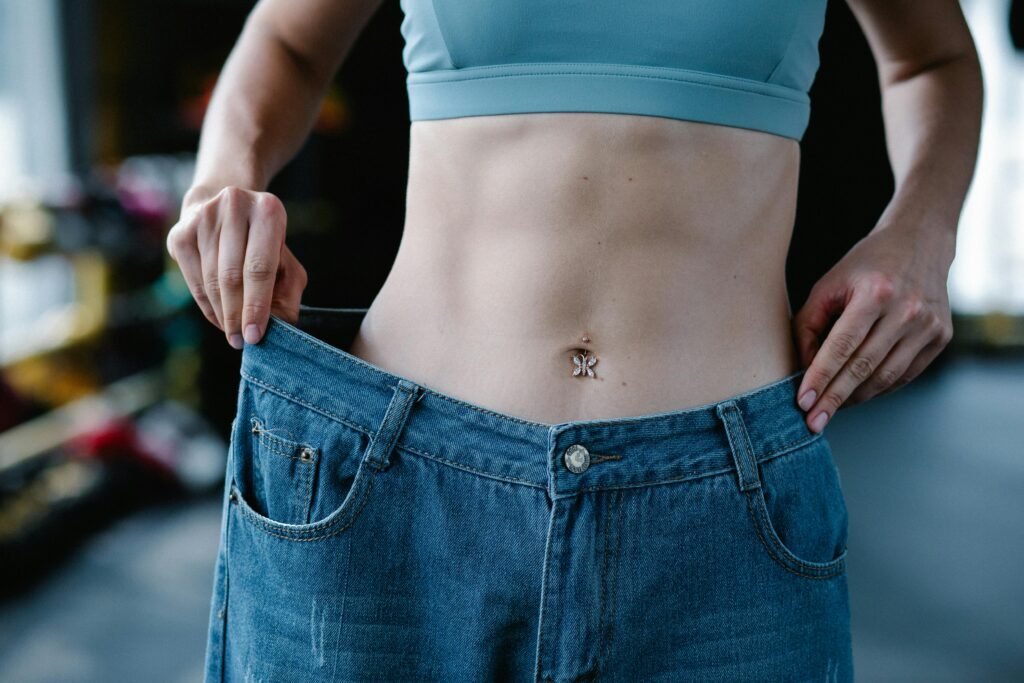Introduction
“Weight Loss Nutrition Plan: A Science-Backed Guide to Healthy, Sustainable Fat Loss” You don’t have to pull hunger strikes or go on wild diets to lose weight. A well-designed weight loss nutrition plan considers nourishing the body while making the individual go through a calorie deficit. You’re in for deep, science-backed writing on fat loss through smart food choices, portion control, and sustainable habits.

Whether you want to lose 10 pounds or 50, this weight loss nutrition plan will put you on track to success without deprivation. We’ll address macronutrients, meal timing, portion sizes, and a seven-day meal plan.
Why Most Diets Fail (And How This Plan Works)
Most diets have pretty distinct shortcomings, turning sealed restrictiveness into cravings and then heavy eating. An effective weight-loss nutrition plan is:
– “Balanced macronutrient” (protein, carbs, and fats) intake.
– Whole, unprocessed foods.
– Control calorie intake without severe restriction.
– fullness and energy.
Not just another diet, this plan teaches how to sustain a lifetime of healthy habits.
Important Aspects of an Effective Weight Loss Diet Plan
1. Protein: The Building Block of Fat Loss
Keep muscle; increase metabolism; make you feel full.
Best protein source for weight loss-these make great choices:
– Lean meats (chicken, turkey, lean beef)
– Fatty fish (salmon, tuna, mackerel)
– Eggs and egg whites
– Yogurt Greek and cottage cheese
– Plant-based proteins (tofu, lentils, chickpeas).
How much protein do you need?
You should aim for ‘0.8-1gram/lb of weight’ (which equals 140g protein for a 140lb person).
2. Fiber is the magic ingredient that enables you to feel full.
Digestion is slowed down by the fibrous material, blood sugar is smoothed, and cravings are tamed.
Here are some of the finest sources of dietary fiber, at least in terms of getting you through:
– Vegetables (broccoli, spinach, brussels sprouts)
– Fruits (berries, apples, pears)
– Whole grains (oats, quinoa, brown rice)
– Legumes (black beans, lentils, chickpeas).
Daily Fiber Goal: A minimum of 25-30 grams per day.
3. Healthy Fats: The Foundation of Hormone Balance.
Healthy fats also provide the right amount of energy for brain function and hormones without being fattening.
Best experiment sources for fats:
– Avocados
– Nuts and Seeds (almonds, walnuts, chia seeds)
– Olive oil and coconut oil
– Fatty fish (e.g. salmon, sardines).
How much fat should you eat?
It might be about 20-30 % of the total daily calories consumed (i.e. maybe around 45-65 g for a 2,000-calorie diet).
4. Smart Carbohydrates: Fuel Without Crash.
Not all carbs are bad. The right ones give you that burst of energy before they crash and burn later.
Good carb choices include:
– Sweet potatoes
– Quinoa
– Brown rice
– Whole wheat bread
– Fruits (bananas, berries).
Avoid: Refined carbs (white bread, pastries, sugary cereals).
The Complete 7-Day Meal Plan for Weight Loss (1,600-1,800 Calories/Day)
Day 1
– Breakfast: Scrambled eggs with spinach + ½ avocado
– Snack: Greek yogurt with blueberries
– Lunch: Grilled chicken salad (mixed greens, cherry tomatoes, olive oil dressing)
– Snack: Carrot sticks with hummus
– Dinner: Oven-cooked salmon + caramelized Brussels sprouts + quinoa
Day 2
– Breakfast: Toasted oats with almond butter and chia seeds
– Snack: Hard-boiled egg + cucumber slices
– Lunch: Turkey wrap (whole-grain tortilla, lettuce, tomato)
– Snack: Handful of almonds
– Dinner: Stir-fried tofu with mixed vegetables + brown rice
(Continue for 5 more days with different meal options.)
Weight Loss Meal Plan Successful Nutrition Tips
1. Meal Preparation Shortens Time and Will Decrease Temptations.
– Cook proteins in bulk (chicken, fish, tofu).
– Chop veggies in advance.
– Portion out snacks to avoid: overstuff yourself.
2. Hydration Aids Control of Hunger.
– Drink “2-3 liters of water daily”.
– Avoid sugary drinks (soda, fruit juices).
– Try herbal tea or black coffee (no sugar).

3. Mindfulness Prevents Overfeeding.
– Eat slowly, chewing food well.
– Stop eating when satisfied to about 80%.
– Refrain from piping other distractions (watching, talking on rules) during a meal.
4. Sleep and Stress Management Proves Its Worth.
– Therefore, there are cravings.
– High cortisol (stress hormone) usually leads to fat storage.
– Target for “7-9 hours of sleep” on a nightly basis.
Common Mistakes in Losing Weight That Should Be Avoided
❌ Skipping meals → Slows metabolism, thus ends up overeating the later part.
❌ Eating fewer calories → Which might lead to muscle loss, feeling lethargy.
❌ Using processed “diet” food → Nutritionally poor but increases cravings and enhances heavy eating.
❌ Portions Are Ignored → Healthy foods also contribute weight gain when overeaten.
FAQ’s on Weight Loss Meal Plans Nutrition
Q. How many calories should I eat to lose weight?
A. – Women: 1,500-1,800 calories a day
– Men: 1,800-2,200 calories a day
(Adjust by activity level.)
Q. Can I still eat carbohydrates but lose weight?
A. Absolutely! Concentrate on ‘completely whole and unprocessed carbs’ (like oats, sweet potatoes, and quinoa).
Q. Is intermittent fasting good for weight loss?
A. Reducing calorie intake can help but “consistency” will count most in intermittent fasting.
Q. How fast can I lose weight safely?
A. About ‘1 to 2 lbs. per week’ is a safe and sustainable amount that can be lost .
Q. Do I have to avoid fat altogether?
A. No. Healthy fats, such as avocado, nuts, and olive oil, are needed in a good metabolism and in the health of hormones.
Conclusion
The nutrition plan for weight loss is flexible, fun, and way sounding: Whole food portions should be controlled and made consistent. Small change can be accumulated with time to alter large guts above the waist.
Begin your journey today—your healthier, leaner body is just around the corner! Check out the link below for top tips on muscle growth supplements. Don’t miss it!
Best Supplement for Muscle Growth – Safe and Effective Options

